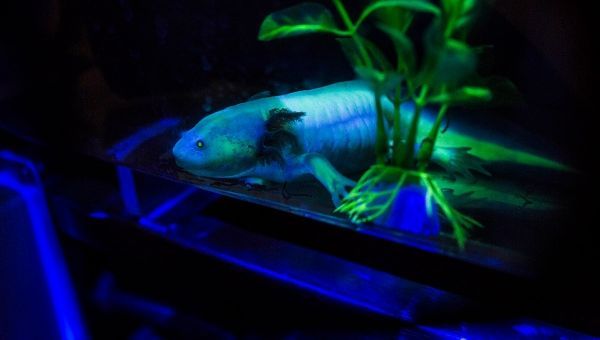Could glowing salamanders hold the key to long-standing evolutionary questions?
Carleton University Prof. Hillary Maddin in the Department of Earth Sciences wants to find out. Maddin recently acquired four pairs of axolotls, an aquatic salamander species, to assist in research on the evolutionary changes of skull development from the prehistoric era to today.
Maddin works in the field of vertebrate paleontology, which studies the evolution of vertebrates from dinosaurs to birds to modern-day humans. Through her research, Maddin noticed there are a lot of aspects regarding the development of the skull that science doesn’t yet fully understand from an evolutionary perspective. The construction and patterns of skull development through time can help explain today’s variety of animal life.
“It gives us the most information typically about who it is, what it is and what it might even be doing.”
Continue reading at Carleton University.
Image via Carleton University.


